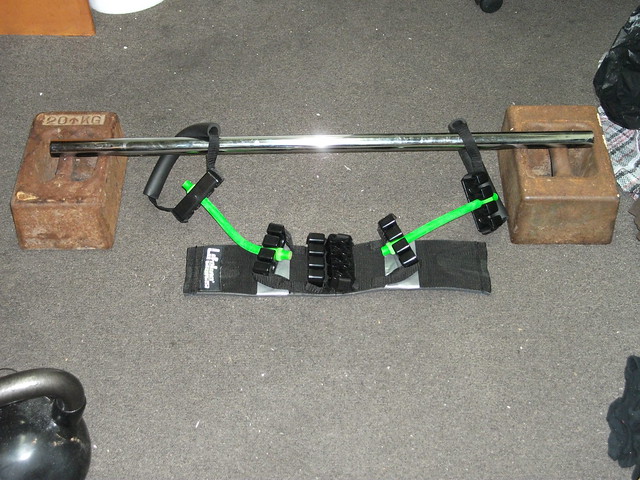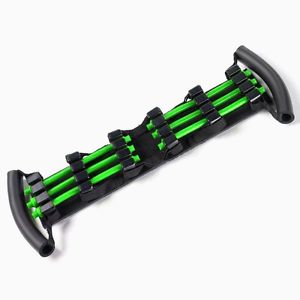Posts Tagged ‘press up’
Structured Push-Up Program for Bench Press Strength
Editors note: Remember Press ups will ultimately build your endurance and conditioning along with hypertrophy. Those things can support maximum strength training but are not quite the same thing. However read the addendum at the end 
Training Frequency:
- Weekly Routine: Perform this program 3-4 times per week. Each session will include variations of push-ups, dips, pull-ups, and occlusion training. Rest at least one day between sessions to allow for recovery.
Phase 1: Base Building (4-6 Weeks)
Objective: Build foundational strength, endurance, and stability while beginning occlusion training.
- Standard Push-Ups: 3-4 sets of 15-20 reps. Focus on form, engaging the chest, triceps, and shoulders. Rest 60-90 seconds between sets.
- Incline Push-Ups: 3 sets of 15-20 reps. Use a bench or step to place hands higher than feet. Rest 60 seconds between sets.
- Ring Push-Ups: 3 sets of 8-12 reps. Introduce ring push-ups to engage stabilizers. Rest 90 seconds between sets.
- Dips: 3 sets of 8-10 reps. Use parallel bars or rings. Focus on controlled movement to protect shoulders. Rest 90 seconds between sets.
- Pull-Ups: 3 sets of 6-8 reps. Perform overhand grip pull-ups, focusing on full range of motion. Rest 90 seconds between sets.
- Occlusion Training: Apply occlusion straps during the last 1-2 sets of each exercise (push-ups, dips, pull-ups). Use light to moderate pressure. Perform 12-15 reps per set when using occlusion.
Phase 2: Progressive Overload (6-8 Weeks)
Objective: Introduce added resistance to increase strength and muscle mass.
- Weighted Push-Ups: 3-4 sets of 8-12 reps. Use a weight vest or backpack. Increase weight as you progress. Rest 90-120 seconds between sets.
- Decline Push-Ups: 3 sets of 10-12 reps. Elevate feet on a bench to shift focus to the upper chest. Rest 90 seconds between sets.
- Resistance Band Push-Ups: 3 sets of 10-15 reps. Use a resistance band around your back. Rest 90 seconds between sets.
- Ring Dips: 3 sets of 8-10 reps. Adding rings adds instability, challenging stabilizers. Use a weight belt if bodyweight becomes too easy. Rest 90-120 seconds between sets.
- Pull-Ups: 3 sets of 8-10 reps. Use different grips (overhand, underhand, neutral) for variety. Consider adding weight once bodyweight is manageable. Rest 90 seconds between sets.
- Occlusion Training: Continue using occlusion straps for the last 1-2 sets of each exercise. Adjust pressure for comfort and safety, focusing on the increased pump and muscle fatigue. Perform 10-12 reps per occlusion set.
Phase 3: Plyometric and Power Development (4-6 Weeks)
Objective: Develop explosive power and enhance fast-twitch muscle fiber activation.
- Plyometric Push-Ups: 2-3 sets of 5-8 reps. Push explosively off the ground, maximizing airtime. Rest 90-120 seconds between sets.
- Clap Push-Ups: 2-3 sets of 5-8 reps. Add a clap mid-air to ensure maximum explosiveness. Rest 90-120 seconds between sets.
- Speed Push-Ups: 3-4 sets of as many reps as possible in 10-15 seconds. Focus on speed and explosiveness. Rest 90 seconds between sets.
- Ring Muscle-Ups (Optional, Advanced): 2-3 sets of 3-5 reps. Combines pulling and pushing movements for a full upper body challenge. Rest 120 seconds between sets.
- Dips: 3 sets of 6-8 reps. Continue with standard or weighted dips. Rest 90-120 seconds between sets.
- Pull-Ups: 3 sets of 6-8 reps. Include explosive pull-ups or weighted variations. Rest 90 seconds between sets.
- Occlusion Training: Use occlusion straps during speed push-ups, dips, and pull-ups for the last 1-2 sets. Perform 8-10 reps per occlusion set, ensuring proper safety and monitoring.
Phase 4: Occlusion Training and Strength Integration (4-6 Weeks)
Objective: Maximize hypertrophy, transition gains into bench press strength, and continue occlusion training.
- BFR Push-Ups (Rings or Standard): 3-4 sets of 10-12 reps. Apply occlusion straps to enhance muscle activation and metabolic stress. Rest 90 seconds between sets.
- BFR Dips and Pull-Ups: 3 sets of 8-10 reps. Continue using occlusion straps to increase muscle activation. Rest 90-120 seconds between sets.
- Weighted Push-Ups or Decline Push-Ups: 3 sets of 8-12 reps, using heavier weights than earlier phases. Rest 90 seconds between sets.
- Bench Press Integration: 3-4 sets of 5-8 reps, starting with manageable weight and progressing. Focus on re-acclimating to the bench press movement. Rest 120 seconds between sets.
- Ring Muscle-Ups (Optional): 2-3 sets of 3-5 reps, focusing on strength and coordination. Rest 120 seconds between sets.
Measuring Progress and Adjustments
- Regular Testing: Test your bench press max every 4-6 weeks to track progress. Use these benchmarks to adjust intensity and volume.
- Flexibility and Mobility: Include dynamic warm-ups before training and static stretching post-workout. Focus on the shoulders, chest, and thoracic spine.
- Nutrition and Recovery: Prioritize a diet rich in protein for muscle repair and growth. Consider using creatine and other performance-enhancing supplements. Aim for 7-9 hours of sleep each night and stay hydrated.
Realistic Expectations
This program should help increase your bench press strength by up to 100 pounds by focusing on muscle memory, hypertrophy, power development, and stability. The timeline for achieving these gains could range from 6 months to a year, depending on your response to training and recovery.
Conclusion
This integrated program combines push-ups, ring training, dips, pull-ups, and occlusion to create a comprehensive strength and hypertrophy regimen. It’s designed to leverage your background as a former advanced lifter, utilizing progressive overload, instability, and occlusion training to maximize strength gains. By maintaining consistency and allowing for adequate recovery, this program will help you rebuild and exceed your previous bench press capabilities.
Addendum: Strength Correlation Between Push-Ups and Bench Press
Push-ups and bench press share a strong correlation, as both exercises engage the chest, triceps, and shoulders. Standard push-ups lift about 64% of body weight, while high-velocity push-ups with elevated legs can lift 70-75%. When performing one-arm push-ups, the effective load increases significantly, often lifting 75-80% or more of body weight with one arm.
This demonstrates elite strength levels, comparable to a 100kg athlete lifting approximately 160 kg (352 lbs) in a bench press, highlighting the effectiveness of advanced push-up variations for building upper body strength.
A better way to use the Lifeline USA power pushup
I have found the main problem with power pushup is discomfort holding the straps with my thumbs alone. It simply is not practical to use with heavy resistance over 200 lbs.
Here illustrated below is the complete solution – way more comfortable…

Resistance Band pushups as good as bench press
On a recent post I mentioned my lifeline power pushup that I intend to use to build up to equal a 400lb bench – which I used to perform at the gym on a machine.
Well now there is some scientific research to backup resistance pushups.
According to sports scientists at the University of Valencia in Spain you can work on your chest muscles without doing bench presses. If you use an elastic band, push-ups are just as effective as bench presses.
Weighted push-ups
The Spanish experimented with students, all of whom had experience with strength training. The researchers got 10 of them to do bench presses twice a week for five weeks, while 10 others did push-ups.
Of course you can train harder by doing bench presses than push-ups. The researchers got round this by making the push-ups heavier for the students by using a resistance band. This meant that the subjects in the push-up group did just as heavy sets, and the same number of reps, as the students in the bench-press group.
Increase in strength
Before and after the training period the researchers measured the amount of weight with which the students could just manage 1 and 6 reps – their 1RM and 6RM. The strength parameters increased in both training groups. The training effect in both groups was also statistically significant.
Conclusion
“The push-up exercise with added elastic resistance provide a feasible and cost-effective option that may be performed anywhere and may be used as an alternative to traditional bench press exercise in order to provide a high intensity stimulus in the prime movers involved in the action and produce maximal strength adaptations”, the researchers write.
“Physical therapists and strength and conditioning specialists may use this information to select or include one of the both exercises performed during a resistance training program.”
Source:
J Strength Cond Res. 2014 Jun 30. [Epub ahead of print].
How do Push ups compare with Bench Press?
This is going to be a short succinct post.
Basically a regular push up is about 65% of your body weight – this is established & if you don’t believe it get some scales.
If your legs are raised its 75% of body weight so for me at about 220 lbs a push up is about 154 lbs.
If I put on my 66 lb weight vest then a push up is 220 lbs. OK that’s an average kind of bench certainly nothing special.
I stopped benching when I switched to KB training but I yearn the stimulation of super heavy weight. I used to bench 400lbs on the machine loaded with extra plates for 5 sets of 6 reps.
So the final step is the get a power pushup from lifeline – which I just ordered off ebay for under $100 including shipping to New Zealand.
With this thing I can take my chest strength back to where it once was 400 lbs+.
